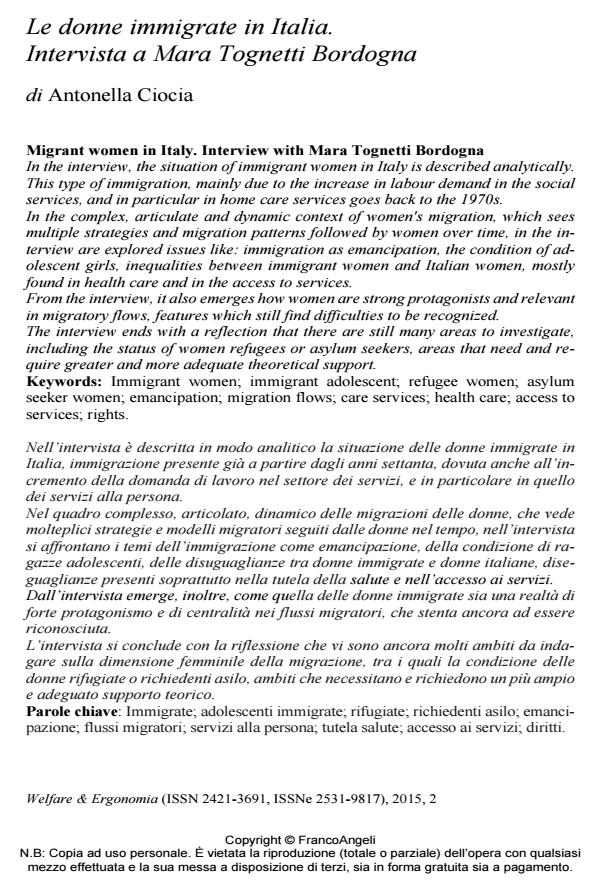Migrant women in Italy. Interview with Mara Tognetti Bordogna
Journal title WELFARE E ERGONOMIA
Author/s Antonella Ciocia
Publishing Year 2017 Issue 2015/2
Language Italian Pages 15 P. 63-77 File size 198 KB
DOI 10.3280/WE2015-002006
DOI is like a bar code for intellectual property: to have more infomation
click here
Below, you can see the article first page
If you want to buy this article in PDF format, you can do it, following the instructions to buy download credits

FrancoAngeli is member of Publishers International Linking Association, Inc (PILA), a not-for-profit association which run the CrossRef service enabling links to and from online scholarly content.
In the interview, the situation of immigrant women in Italy is described analytically. This type of immigration, mainly due to the increase in labour demand in the social services, and in particular in home care services goes back to the 1970s. In the complex, articulate and dynamic context of women's migration, which sees multiple strategies and migration patterns followed by women over time, in the interview are explored issues like: immigration as emancipation, the condition of adolescent girls, inequalities between immigrant women and Italian women, mostly found in health care and in the access to services. From the interview, it also emerges how women are strong protagonists and relevant in migratory flows, features which still find difficulties to be recognized. The interview ends with a reflection that there are still many areas to investigate, including the status of women refugees or asylum seekers, areas that need and require greater and more adequate theoretical support.
Keywords: Immigrant women; immigrant adolescent; refugee women; asylum seeker women; emancipation; migration flows; care services; health care; access to services; rights.
Antonella Ciocia, Le donne immigrate in Italia. Intervista a Mara Tognetti Bordogna in "WELFARE E ERGONOMIA" 2/2015, pp 63-77, DOI: 10.3280/WE2015-002006